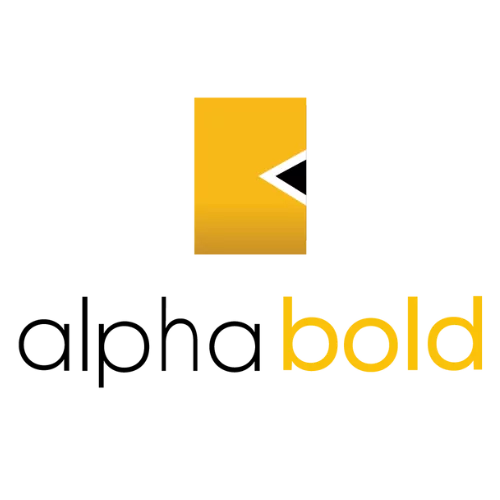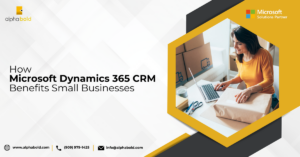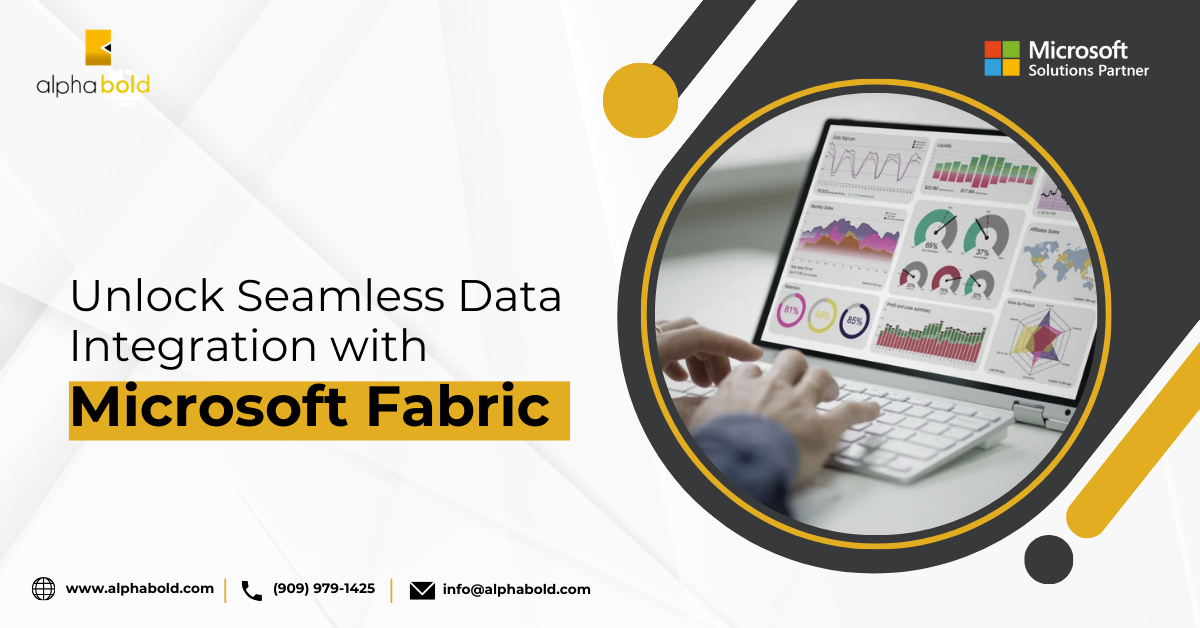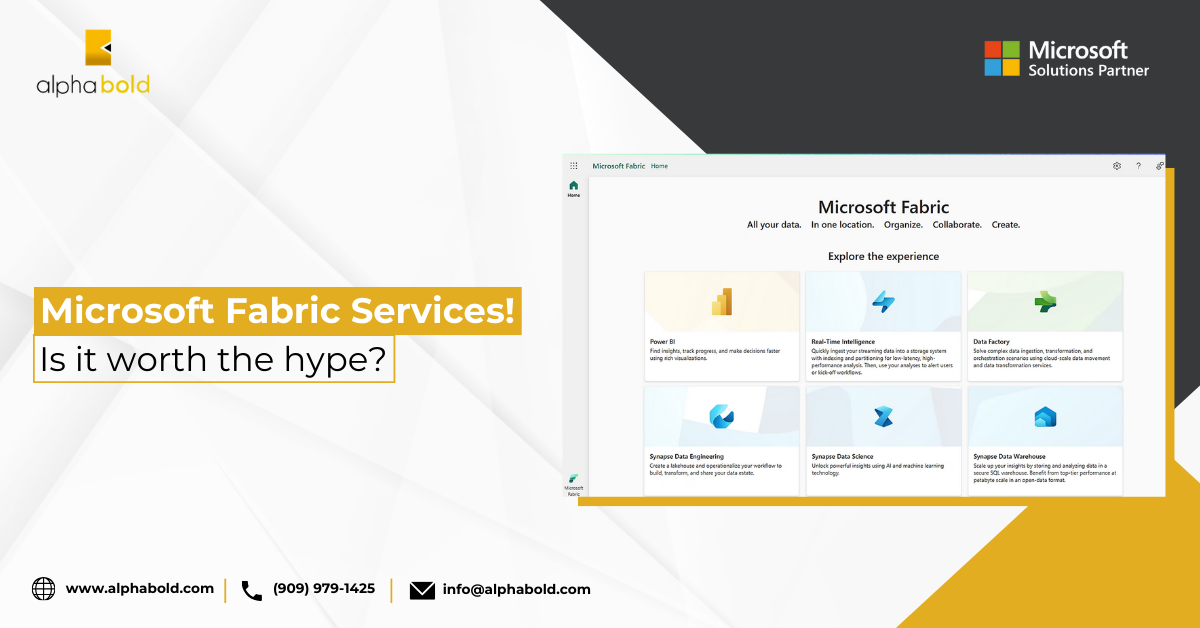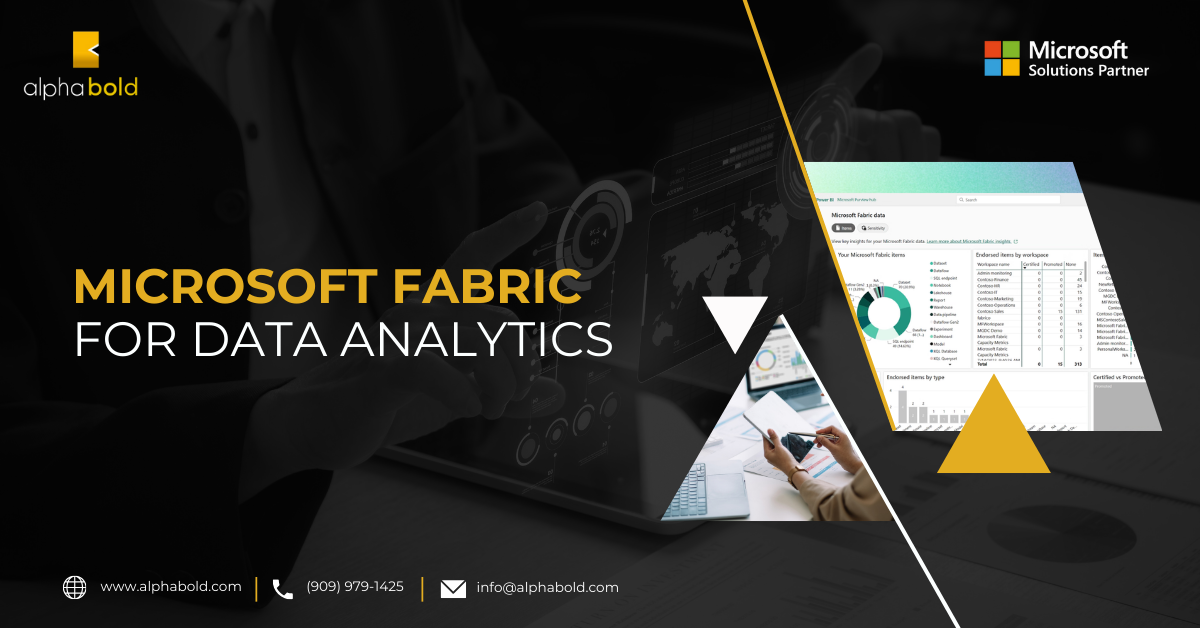Introduction
If you lead an organization that relies heavily on data analysis or are interested in learning about Microsoft Fabric’s ROI, then this blog is for you. In this blog post, we’ll help you understand how data analytics, effectively supported by Microsoft Fabric, can bring back an ROI that revolutionizes your business’ efficiency and profitability for long-term future success.
If you look deeper into the current business market, you will uncover the threats and challenges confronting companies that fail to utilize the available data in enterprises skillfully. These challenges can amount to poor decision-making, cost inefficiencies, lack of innovation, and loss of competitive edge.
Given the cut-throat competition in the current global market, data analysis has become essential to staying ahead of the trends and increasing a company’s profitability. Creating custom solutions and making decisions requires data- a lot of it. These solutions are only as good as the data generated from core business activities.
As you step into a future built on AI, IoT, and other tech, like virtual reality, you must create a business environment to support AI innovation, tech solutions, and an ROI that expands your profitability goals.
If your data environment has organically grown over the years, and you are facing challenges with siloed and fragmented solutions like Power BI, Azure Data Factory, and Microsoft Fabric can be a true-life saver in this regard with its long-term cost-saving benefits.
Let’s get into the technicalities of Microsoft Fabric’s ROI and the key challenges it can solve for an organization like yours!
Understanding Microsoft Fabric- Latest Data Analytics Capabilities
Microsoft Fabric is a comprehensive analytics solution that covers everything under its umbrella, i.e., data movement, BI, real-time analytics, data science, etc. It provides an all-inclusive range of services in a single location, such as data integration, data engineering, and data lakes.
With Microsoft Fabric you don’t have to combine various services from different providers. Moreover, you can use a highly integrated, comprehensive, user-friendly solution that streamlines your analytics requirements.
SaaS foundation:
Since Microsoft Fabric is built on SaaS (software as a service), it brings a whole new level of integration capabilities and simplicity.

Microsoft Fabric amalgamates previous and latest Power BI, Azure Data Factory, and Azure Synapse features. It integrates all these solutions into a single environment and can be seen throughout the diverse set of personalized user “experiences.” Each capability offered by Fabric is termed as an experience.
Source: What is Microsoft Fabric
Fabric allows the convergence of multiple experiences (capabilities) built on one SaaS foundation, such as Data Engineering, Data Factory, Data warehouse, Power BI, and Data science. Now, how does this help you? This brings:
- Availability of industry-wide, tightly integrated analytics.
- Common situations that are simple to understand and are correlated.
- A straightforward process for developers to access and utilize any resource.
- One data lake that lets you use your favorite analytics tools and keep the data in its original location.
- Centralized control and management for every experience.
Fabric has captured the interest of multiple consumers like you looking for a robust analytics solution. 25,000 companies worldwide, including 67% of the Fortune 500, have already adopted Fabric since its initial release. Most clients respect Fabric’s comprehensive value proposition, as evidenced by the 84% of businesses use three or more workloads (experiences).
These numbers serve as evidence that Microsoft Fabric’s ROI is not just a theoretical advantage but a proven, quantifiable benefit that enhances operational efficiency and drives competitive success.
Bonus read: Advanced AI Analytics in Power BI for CTOs: Transforming Data Strategy.
What Key Challenges Can Microsoft Fabric Cater To?
To make the data accessible and collaborate through the processing phase, developing teams frequently use complex procedures and interfaces that take hundreds of hours to develop and maintain. Here are some of the most common challenges that Microsoft Fabric can provide a solution to:
- Difficulty in project and task collaboration: Individual team members sometimes utilize different tools that need unique login credentials with specialist programming or query language. This can often result in project delays, misunderstandings, and finger-pointing. It also weakens team collaboration and team-building efforts, making it more difficult for them to critique, discuss, or improve one another’s work.
“Maybe we are already able to do all these things without Fabric, but with much, much, much, much more complexity. And system complexity presents a risk.” — Solution technician, financial services.
- Inadequate utilization of the skills of employees: Experts in the fields of data engineering and business analytics face challenges with the amount of time and effort they spend on tasks that do not make a significant difference while providing decision-makers with the information they need.
- Prolonged access to information: Studies have shown that the size of an organization’s data sets makes it challenging for employees to operate in real-time because of the length of time needed to gather and update data. Business analysts could wait a long time to receive the needed information. Sometimes, it takes even longer to receive additional revisions.
- Excessive dependence on vendors and solutions providers: The utilization of several platforms and technologies in analytics processes can result in companies bearing the financial burden of monitoring and sustaining them all.
Drive Efficiency with Microsoft Fabric
Ready to revolutionize your data analytics approach? Schedule a demo with our team and discover how Microsoft Fabric can streamline your processes and drive efficiency.
Request a DemoMicrosoft Fabric’s ROI: Proven Cost Saving and Business Benefits
Microsoft and Forrester Consulting collaborated to carry out a Total Economic Impact (TEI) analysis, which examined the possible return on investment (ROI) that businesses can get by implementing Microsoft Fabric.
During Microsoft Fabric’s private preview, Forrester conducted in-depth interviews with four individuals who had firsthand experience with the product to carefully gather information on this investment’s advantages, disadvantages, and risks.
Microsoft Fabric’s ROI and Long-Term Quantified Benefits:
The study provides executives such as yourself with insightful guidelines that make it possible to thoroughly assess the potential financial impact of Microsoft Fabric’s ROI on your company. Let’s dive right into these numbers.
Quantified Projected Benefits:
The following quantifiable benefits were assessed over a three-year period using risk-adjusted present value:
- A 50% increase in the productivity of data scientists and engineers. In addition to enhancing manipulation and cooperation capabilities, Microsoft Fabric enabled organizations to consolidate and simplify access to all of their available data. This, in turn, facilitated more productive work for data teams.
- The companies implementing Microsoft Fabric experienced a 15% increase in business analyst productivity. The analysts in the organization were able to give its business teams greater insights more quickly because Microsoft Fabric enables data experts to respond faster, streamlines procedures, and offers more user-friendly technology.
- Better insights led to improved business results ranging from $500,000 to $1.2 million. With timely and more valuable data and suggestions, the organizations as a whole were able to move faster in the market and steer clear of expensive blunders.
- Organizations saw a $660,000–$1.0 million decrease in security, governance, and compliance expenses. Fabric OneLake scans data to prevent security vulnerabilities and automatically enforces its governance and security policies.
- The organizations saved almost $1.1 million by reducing expenditures on existing solutions. Once they implemented Fabric, most or all of the fees and administrative expenditures connected with its previous analytics systems were eliminated.
Unquantified Benefits:
Among the valuable benefits that have not been quantified for this research on Microsoft Fabric’s ROI are:
- Microsoft Fabric helped improve work satisfaction for all data professionals. Giving staff more time to concentrate on insights rather than data manipulation allowed them to use their abilities and grow.
- It increased the data analytics team’s capacity and innovation. According to interviewees, the SaaS-based UI of Microsoft Fabric is easy to use and encourages data workers of all skill levels to experiment and grow.
- Employees experienced improvements in the connection between data analytics’ commercial and technological aspects. With Microsoft Fabric, data analytics experts can work together more smoothly across teams, and it is made to satisfy their demands.
Accelerate your Business with Microsoft Fabric
Curious about the benefits of Microsoft Fabric for your organization? Schedule a demo today and let us demonstrate how Fabric can accelerate your journey to success.
Request a DemoMicrosoft Fabric’s Data Analytics Solutions Across Multiple Industries
If you are thinking of investing in Microsoft Fabric and confused about what benefits it can bring to your company, here’s a breakdown of a few industries in general and how they can take advantage of Microsoft Fabric’s ROI.
1. Patient-centered Treatment in Healthcare:
Design user-friendly patient portals and electronic health record interfaces to improve the overall experience for both patients and healthcare providers. By streamlining administrative duties like making appointments and updating patient data, healthcare practitioners can free up time to concentrate more on patient care.
2. Optimal Production Efficiency in Manufacturing:
Manufacturers can boost production efficiency and make well-informed decisions by customizing interfaces for real-time tracking of manufacturing processes and quality control. You can ensure that applications remain relevant and effective over time by adapting to shifting industrial demands and technological advancements.
3. Enhanced Shopping Opportunities for Clients in Retail:
You can create aesthetically attractive user interfaces for e-commerce platforms to enhance the appearance and interaction of online shopping carts and catalogs. By meeting customer demands and increasing consumer satisfaction, you can ensure that they have a positive online purchasing experience across all platforms.
4. Safe Platforms in Finance :
You can create financial services apps emphasizing security and trust, following design guidelines that inspire user confidence. With Fabric, it’s easier for you to simplify intricate procedures and increase user satisfaction by designing intuitive interfaces for managing accounts and banking transactions.
Looking for good data analytics tools for your CRM? Here’s what you can get with Microsoft Dynamics 365: Transforming Data into Insights: Reporting and Analytics in Dynamics 365 for Marketing.
Has Microsoft Fabric Interested You?
Curious about what Microsoft Fabric's ROI can do for your business? Request your demo with AlphaBOLD today!
Request a DemoConclusion
Investing in Microsoft Fabric could be the strategic move that pushes your company to new heights. With its scalable features and tailored analytics solutions, Microsoft Fabric is positioned to streamline operations across healthcare, manufacturing, retail, and finance. This versatility ensures that enterprises at any lifecycle stage can enhance their efficiency and innovation.
Having explored Microsoft Fabric’s ROI throughout this blog, you’ve seen its significant, disruptive potential. This is not just theoretical; it’s a proven impact validated by Microsoft and Forrester Consulting’s Total Economic Impact study. Microsoft Fabric’s ROI extends beyond mere numbers, creating favorable conditions for increased productivity and profitability by addressing critical challenges such as cooperation barriers and data accessibility.
Don’t miss the opportunity to join the ranks of businesses worldwide that have already realized the tremendous benefits of Microsoft Fabric’s ROI. It’s time to explore how Microsoft Fabric can transform your business operations. Request a demo today to discover the difference it can make for your enterprise today.
Explore Recent Blog Posts

